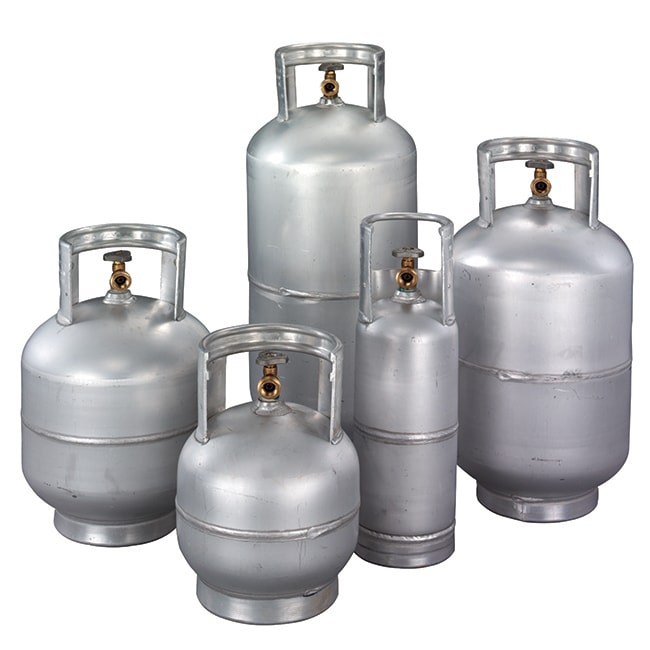
Propane is a three-carbon alkane that belongs to the family of hydrocarbons, which are molecules composed of carbon and hydrogen atoms. It is a simple and versatile compound that is widely used in various industrial, commercial, and residential applications. Its chemical formula is C3H8, which means that it contains three carbon atoms and eight hydrogen atoms. Propane is one of the lightest and simplest of all the hydrocarbons, making it an important and useful fuel source.
Propane was first discovered in 1857 by the French chemist Marcellin Berthelot. Berthelot synthesized propane by reacting propyl iodide with zinc in the presence of hydrochloric acid. He named the compound “propane” after the Greek words “pro” and “pan,” meaning “before” and “all,” respectively, as propane was one of the first products of crude oil refining. Berthelot’s discovery of propane was an important milestone in the history of chemistry and the petroleum industry.
The name “propane” comes from the Greek words “pro” and “pan,” which mean “before” and “all,” respectively. The name reflects the fact that propane was one of the first products of crude oil refining, and that it played a significant role in the early development of the petroleum industry. The name “propane” is widely used in English-speaking countries, but the compound is also known by other names, such as LPG (liquefied petroleum gas), autogas (when used as a vehicle fuel), and bottled gas (when sold in small cylinders for domestic use).
Propane is a colorless, odorless gas at room temperature and atmospheric pressure. To make propane easily detectable in case of leaks, it is usually odorized with a distinctive smell, often described as a “rotten egg” or “skunk” odor. The odorant used in propane is typically ethyl mercaptan, a sulfur-containing compound that has a very strong odor even at low concentrations. The addition of odorants to propane is a safety measure that helps to prevent accidents and injuries caused by gas leaks.
The boiling point of propane is -42°C (-44°F) at atmospheric pressure, which means that it can be easily converted from a liquid to a gas by applying heat or reducing the pressure. Propane vaporizes at a relatively low temperature, which makes it a convenient and efficient fuel for a wide range of applications. When propane vaporizes, it absorbs heat from its surroundings, which makes it an effective coolant as well as a fuel.
Propane is denser than air and can accumulate in low-lying areas, increasing the risk of fire or explosion if it ignites. For this reason, propane should never be stored or used in enclosed spaces without proper ventilation. Propane is heavier than air, so it tends to sink to the ground and collect in low-lying areas such as basements or trenches. If propane leaks from a container or pipeline, it can quickly fill a room or an enclosed space, displacing oxygen and creating a hazardous environment.
Propane is commonly used as a fuel for heating, cooking, and transportation. It is widely used in residential, commercial, and industrial applications, such as heating homes and buildings, cooking food, and powering vehicles and equipment. Propane is a versatile fuel that can be used in many different ways, and it is often preferred over other fuels because of its clean-burning properties, high energy content, and portability.
Propane is a clean-burning fuel that produces fewer emissions than many other fossil fuels. When burned, propane produces carbon dioxide (CO2) and water vapor (H2O), along with smaller amounts of other pollutants. Compared to gasoline or diesel fuel, propane produces significantly lower levels of nitrogen oxides (NOx), particulate matter (PM), and other harmful emissions. As a result, propane is often used as a cleaner-burning alternative to gasoline or diesel in vehicles and equipment.
Propane is also used as a refrigerant and in the production of petrochemicals and plastics. Propane has excellent cooling properties, and it is often used as a refrigerant in air conditioning and refrigeration systems. Propane is also used in the production of propylene, which is a key building block for the manufacture of a wide range of plastics and synthetic materials. Propane is a valuable feedstock for the petrochemical industry, and it is used to produce a wide range of products, including plastics, solvents, and lubricants.
Propane is a significant contributor to the energy mix in the United States. According to the U.S. Energy Information Administration (EIA), the U.S. consumed 9.4 billion gallons of propane in 2020, which accounted for roughly 16% of the country’s total energy consumption. This consumption is spread across various sectors, including residential, commercial, industrial, and transportation.
The residential sector is the largest consumer of propane, accounting for about 46% of total consumption. Propane is commonly used for home heating and cooking in areas where natural gas is not available. Propane is also used for outdoor applications such as grilling and heating swimming pools and hot tubs.
The commercial sector is the second-largest consumer of propane, accounting for about 22% of total consumption. Propane is used in various commercial applications, including heating and cooling buildings, cooking, and providing backup power for critical systems.
The industrial sector accounts for approximately 22% of total propane consumption. Propane is used in many industrial applications, including manufacturing, drying, and processing. Propane is also used as a fuel for forklifts and other material handling equipment.
The transportation sector is the smallest consumer of propane, accounting for less than 1% of total consumption. Propane is used as a fuel for fleet vehicles such as buses, taxis, and delivery trucks. Propane-powered vehicles produce fewer emissions than gasoline or diesel-powered vehicles and are often used in areas with strict emissions regulations.
Propane is a gas that can be compressed into a liquid form and stored in sealed containers, such as tanks or cylinders. When stored properly, propane can have a long shelf life of up to 10 years. Proper storage conditions are important to maintain the quality and safety of the propane.
Propane is an alternative fuel that can be used to power vehicles. When compared to gasoline-powered vehicles, propane-powered vehicles emit significantly lower levels of harmful pollutants. Specifically, propane-powered vehicles emit 60% less carbon monoxide and 20% less nitrogen oxide.
Carbon monoxide is a poisonous gas that is emitted from the combustion of fossil fuels. Exposure to high levels of carbon monoxide can cause headaches, dizziness, nausea, and even death. Nitrogen oxide is a pollutant that is formed when fossil fuels are burned at high temperatures, and it can contribute to the formation of smog and acid rain.
Propane-powered vehicles produce fewer emissions than gasoline-powered vehicles because propane burns more cleanly than gasoline. Propane has a higher hydrogen-to-carbon ratio than gasoline, which means that it produces less carbon dioxide and other harmful pollutants when burned. Propane also burns more efficiently than gasoline, which means that less fuel is required to produce the same amount of energy.
In addition to producing lower levels of harmful pollutants, propane is also a domestically produced fuel, which reduces the country’s reliance on foreign oil. Propane is produced from natural gas and crude oil, but it can also be produced from renewable sources such as biomass and waste.
Propane-powered vehicles offer significant environmental and economic benefits when compared to gasoline-powered vehicles. Propane produces lower levels of harmful pollutants, reduces the country’s reliance on foreign oil, and can be produced from renewable sources. As such, propane-powered vehicles are an attractive option for those who are looking for a cleaner and more sustainable way to power their vehicles.
The propane industry is regulated by various federal and state agencies to ensure safety and compliance with environmental and health regulations. The Occupational Safety and Health Administration (OSHA), the National Fire Protection Association (NFPA), and the Environmental Protection Agency (EPA) are some of the agencies that regulate the propane industry.
The propane industry employs thousands of people in various roles, including production, distribution, sales, and service. Propane companies provide training and certification programs for employees to ensure that they are knowledgeable about propane safety, regulations, and industry best practices.
Propane is a global commodity that is traded on international markets. The price of propane can be influenced by factors such as supply and demand, weather conditions, geopolitical events, and fluctuations in the price of crude oil.
Propane is a sustainable fuel that can be produced from renewable sources such as biomass, waste materials, and vegetable oils. Bio-propane, also known as renewable propane, has the same properties as conventional propane and can be used in the same applications. Bio-propane has a lower carbon footprint than conventional propane and is considered a low-carbon fuel.
Propane is an important energy source that provides heating, cooking, refrigeration, air conditioning, transportation, and power generation to millions of people around the world. Its versatility, cleanliness, and cost-effectiveness make it an attractive alternative to other fossil fuels. With the development of renewable propane and other alternative fuels, propane is poised to play an even greater role in meeting the world’s energy needs in the years to come.









